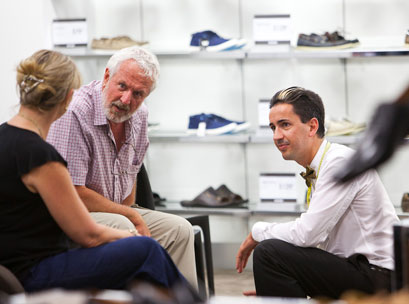There are two astounding statistics about Customer Service: ONE: Over 95 per cent of management teams we’ve surveyed claim to be customer focused. (I suppose the remaining 5 per cent would be the margin of error, because I have never come across those people.) TWO: Fully 80 per cent of executives believe they offer good service and 8 per cent of consumers agree. And this is not some internet statistic, it is based on a study by Bain & Co. Translations: Executives are living in Cuck
koo Land.
You can’t blame the executives, because their beliefs are often based on mystery shopping reports – more about that shortly. It has always puzzled me as to why that would be dramatically incongruent, and I would like to offer a hypothesis and hear yours.
I have considered all of the following:
Executives outsource the measurement and management of ‘customer service’ to others
Executives don’t appreciate that delivering good customer service is a function of a customer-orientated culture.
Executives tend to under-estimate the complexity of embedding a customer-focussed culture. Typically, the implementation of customer service is based on the over-riding principle of ‘do unto the customer as you want done to you’; but this is too simplistic in larger organisations.
Most people (including executives) judge customer service subjectively. They judge good and bad based on what they personally consider to be good or bad.
All of the above are partially true, but the main reason why I believe there is such a discrepancy between the metrics used to generate customer service scores is because they are arrived at by:
Considering a specific attribute/ touch point (sales person greeted me in a friendly manner)
Allocating a score to that attribute (6 out of 10)
Summing and averaging the scores
Determining an overall satisfaction rating (e.g. 0 per cent)
There are obvious problems with that because all parts of the journey (all variables) are not equally important. The way I used to deal with that (when I owned a mystery shopping company) was to agree relative importance with the client and then calculate a weighted average. (I don’t know if anyone else does that.) But even this is still flawed.
To illustrate very simply, let’s use five percentage scores across five variables to determine an overall score.
Typically, your CS score will be calculated like this:
The scores will be added and averaged to arrive at a final score.
If Score 5 improves from 60 per cent to 90 per cent, then the overall score will improve to 76 per cent; approximately a 10 per cent improvement.
But customer experience is not the result of cumulative averages and aggregates.
Everything can perfect, but if the final interaction is absolutely terrible, then the customer’s overall experience will be completely negative.
Customer satisfaction should therefore be calculated as a PRODUCT and not the AVERAGE.
Consider the same five scores.
If the Score 5 improves to 90 per cent, then the overall score will improve to 24 per cent; approximately a 50 per cent improvement.
In the latter case, which better reflects reality, your overall customer satisfaction is materially worse to what you have been told up to this point.
If you consider that the student or housewife (mystery shopper) who came up with a 90 per cent on a particular attribute did so through a filter of strong biases, inexperience and lack of perceptiveness AND that the actual experience is so materially influenced by variations in score, then that explains the biggest conundrum in customer service.
It explains why a Customer Service Score is more like 15 per cent or 25 per cent rather than 80 per cent or 90 per cent as you have been led to believe. That is because overall CS scores are a product of a series of touch points, NOT the average. (And you read that here first!)
And that is my hypothesis for the gulf that exists between what the owners and executives believe and what the customers actually think: customer service is a product of all the touch points, not the average.
Ganador: Management SOLUTIONS (especially tough ones)

